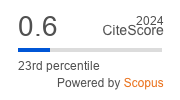Errors in automated triage of preventive chest scans: main causes and potential reduction strategies
https://doi.org/10.29001/2073-8552-2025-40-3-212-224
Abstract
Introduction. The high prevalence of chest X-ray and fluorographic examinations creates significant workload for the radiology department. One promising solution for optimizing the preventive radiography and fluorography pipelines is employing artificial intelligence (AI) technologies. This approach demonstrates effectiveness in triaging studies based on binary assessment (“normal”/”abnormal”). Evaluation of this method identified shortcomings in the form of false-negative results requiring further study and improvement.
Aim: To evaluate potential methods for reducing false-negative results in automated triage of preventive chest radiographic examinations using AI-powered software.
Material and Methods. In a retrospective diagnostic study conducted from May 1, 2025, to June 30, 2025, we analyzed 411 cases of false-negative results identified during evaluation of automated triage powered by three different AI models. The study utilized data from preventive chest radiographic examinations performed in outpatient setting and mass screening examinations of the adult population in Moscow. Images were re-analyzed by two expert radiologists (> 10 years of experience) considering the available clinical information and patient history data. Analytical and descriptive statistical methods were used.
Results. The majority (n = 266) of false-negative results were associated with missed infiltrative changes and pulmonary foci. The remaining clinically significant discrepancies were observed in 24 cases.
Analysis of archival data and patient histories identified additional information that, when integrated into AI-powered services, could influence study interpretation and reduce false-negative risk. Such data were found in 68.3% of cases (n = 198) with clinically significant omissions and in 5% (n = 6) with clinically insignificant omissions.
Conclusion. Reducing false-negative results requires an integrated approach: implementing duplicate AI services, improving physician referral quality, and integrating clinical data and previous patient study results into AI algorithms, necessitating development of multimodal AI software.
Keywords
About the Authors
A. V. BazhinRussian Federation
Alexander V. Bazhin - Cand. Sci. (Med.), Deputy Director for Educational Affairs, Moscow Center for Diagnostics and Telemedicine.
24, Petrovka str., bldg. 1, Moscow, 127051
Yu. A. Vasilev
Russian Federation
Yuriy A. Vasilev - Cand. Sci. (Med.), Medical Director, Moscow Center for Diagnostics and Telemedicine.
24, Petrovka str., bldg. 1, Moscow, 127051
A. V. Vladzymyrskyy
Russian Federation
Anton V. Vladzymyrskyy - Dr. Sci. (Med.), Deputy Director for Research, Moscow Center for Diagnostics and Telemedicine.
24, Petrovka str., bldg. 1, Moscow, 127051
References
1. Ignatyeva V.I., Kontsevaya A.V., Kalinina A.M., Drozdova L.Y., Mukaneeva, D.K., & Drapkina, O.M. (2024). Sotsialnoekonomicheskaya effektivnost meropriyatiy po rannemu vyyavleniyu onkologicheskikh zabolevaniy pri dispanserizatsii. Profilakticheskaya Meditsina. 2024;27(1):36–44. (In Russ.). https://doi.org/10.17116/profmed20242701136.
2. Golubev N.A., Ogryzko E.V., Tyurina E.M., Shelepova E.A., Shelekhov P.V. (2021). Features of the development of the radiation diagnostics service in the russian federation for 2014-2019. Current problems of health care and medical statistics. 2021;(2):356–376. (In Russ.). https://doi.org/10.24412/2312-2935-2021-2-356-376.
3. Shelekhov P.V. Personnel situation in radiative diagnostics. Current problems of health care and medical statistics. 2019;(1):265–275. (In Russ.). https://doi.org/10.24411/2312-2935-2019-10018.
4. Vasilev Yu.A., Tyrov I.A., Vladzymyrskyy A.V., Arzamasov K.M., Pestrenin L.D., Shulkin I.M. A new model of organizing mass screening based on stand-alone artificial intelligence used for fluorography image triage. Zdorov’e Naseleniya i Sreda Obitaniya. 2023;31(11):23–32. (In Russ.). https://doi.org/10.35627/2219-5238/2023-31-11-23-32.
5. Vasilev Yu.A., Sychev D.A., Bazhin A.V., Shulkin I.M., Vladzymyrskyy A.V., Golikova A.Yu. et. al. Autonomous artificial intelligence for sorting results of preventive radiological examinations of chest organs: medical and economic efficiency. Digital Diagnostics. 2025;6(1):5–22. https://doi.org/10.17816/DD641703.
6. Zhang T., Ding R., Luong K.D., Hsu W. Evaluating an information theoretic approach for selecting multimodal data fusion methods. J. Biomed. Inform. 2025;167:104833. https://doi.org/10.1016/j.jbi.2025.104833.
7. Varunkumar K., Zymbler M., Kumar S. Multimodal deep dilated convolutional learning for lung disease diagnosis. Brazilian Archives of Biology and Technology. 2024;67:e24231088. https://doi.org/10.1590/1678-4324-2024231088.
8. Oncu E., Ciftci F. Multimodal AI framework for lung cancer diagnosis: Integrating CNN and ANN models for imaging and clinical data analysis. Comput. Biol. Med. 2025;193:110488. https://doi.org/10.1016/j.compbiomed.2025.110488.
Review
For citations:
Bazhin A.V., Vasilev Yu.A., Vladzymyrskyy A.V. Errors in automated triage of preventive chest scans: main causes and potential reduction strategies. Siberian Journal of Clinical and Experimental Medicine. 2025;40(3):212-224. (In Russ.) https://doi.org/10.29001/2073-8552-2025-40-3-212-224





.png)





























